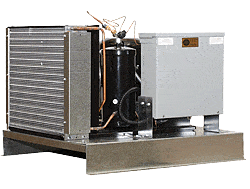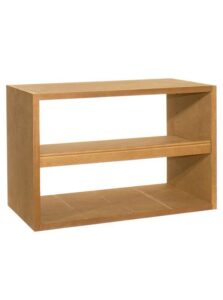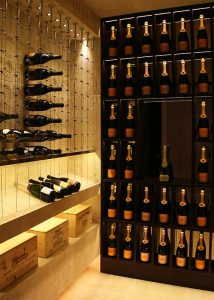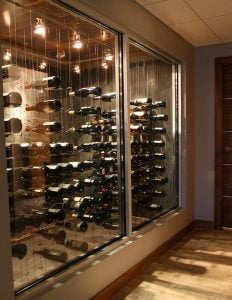A wine cellar can be a beautiful and functional addition to any home, providing a dedicated space for storing and aging your favorite vintages. Whether you’re a seasoned wine connoisseur or just starting to build your collection, constructing and designing a wine cellar can seem like a daunting task. However, with a bit of planning and some helpful tips, you can create a wine cellar that meets your needs and complements the style of your home.
Before you begin construction, there are a few key factors to consider. First, think about the size and location of your wine cellar. How much space do you have available, and how many bottles do you plan to store? Will the wine cellar be a standalone room or part of a larger space? The location of your wine cellar is also important, as it should be kept at a consistent temperature and humidity level to ensure proper storage conditions for your wine. A basement or lower level is often the best location, as these areas are naturally cooler and more humid than the upper floors of a home.
Next, consider the materials and design of your wine cellar. There are several options for construction materials, including wood, stone, and concrete. Wood is a popular choice for wine cellars because it can be stained or finished to match the decor of your home, and it provides insulation to help regulate temperature and humidity. Stone and concrete are also good options, as they are durable and can help maintain a consistent temperature and humidity level.
The design of your wine cellar should also be carefully thought out. The layout should be functional and allow for easy access to your wine collection. This can be achieved through the use of wine racks, shelving, or custom storage solutions. Consider the type of wine you will be storing, as well as how you plan to access and display it. For example, if you have a large collection of red wine, you may want to consider installing racks that allow for horizontal storage to prevent the cork from drying out.
In addition to the layout, pay attention to the details that will make your wine cellar a stylish and inviting space. Lighting is an important element in a wine cellar, as it can highlight your collection and create a warm and inviting atmosphere. Choose lighting that is soft and subtle to avoid damaging the wine or creating too much heat. Consider installing dimmer switches to allow you to adjust the lighting as needed.
The type of door you choose for your wine cellar is also an important consideration. A solid wine cellar door with insulation will help to maintain a consistent temperature and humidity level, while a glass door can allow for natural light and create a visually appealing entrance to your wine cellar.
Once your wine cellar is constructed and designed, there are a few key things you can do to ensure your wine is stored in the best possible conditions. First, invest in a good wine cooler or refrigeration system to maintain a consistent temperature. The ideal temperature for storing wine is between 45 and 65 degrees Fahrenheit, with 55 degrees being the ideal. A humidifier can also be helpful in maintaining the proper humidity level, which should be between 50% and 80%.
Another important factor to consider is the placement of your wine bottles. Wine should be stored on its side to keep the cork moist and prevent it from drying out. This is especially important for wines that will be stored for an extended period of time. Be sure to leave enough space between the bottles to allow for proper air circulation, and avoid storing wine near heat sources or in direct sunlight.
Finally, keep in mind that a wine cellar is a long-term investment, and it’s important to consider the needs of your wine collection as it grows and evolves.




